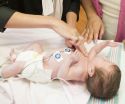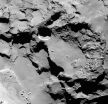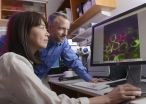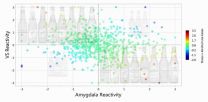'Smaller is smarter' in superspreading of influence in social networks -- CCNY physicists
2015-07-01
(Press-News.org) A study by City College of New York physicists Flaviano Morone and Hernán A. Makse suggests that "smaller is smarter" when it comes to influential superspreaders of information in social networks. This is a major shift from the widely held view that "bigger is better," and could have important consequences for a broad range of social, natural and living networked systems.
"The problem of identifying the minimal set of influential nodes in complex networks for maximizing viral marketing in social media, optimizing immunization campaigns and protecting networks under attack is one of the most studied problems in network science," said Makse, a professor in City College's Levich Institute and a fellow of the American Physical Society. "So far, only intuitive strategies based mainly on 'attacking' the hubs to identify crucial nodes have been developed."
Morone and Makse set about to solve the problem by applying what they described as "rigorous theoretical solutions and systematic benchmarking." They also proposed a scalable algorithm, called Collective Influence algorithm, that they believe beats all the competing methods in massively large-scale social networks like Twitter and Facebook with more than 100 million users.
"Through rigorous mathematical calculations, employing optimal percolation and state-of-the-art spin glass theory, we solved the optimal collective influence problem in random networks," said Morone. "We show that the set of optimal superspreaders radically differ and is much smaller than that obtained by all previous heuristics rankings, including PageRank, the basis of Google."
According to the CCNY researchers, their theory shows that the most influential superspreaders are not the most connected people in the network. Top influencers are highly counterintuitive: weakly connected people strategically surrounded by hierarchical coronas of hubs (see image) are the most powerful influencers. Thus, their work provides a theoretical revision to the current view on influence, marking a paradigm shift from "bigger is better" to "smaller is smarter."
These results will appeal to an extensive range of scientists in fields such as networks, physics, mathematics, epidemiology, marketing, as well as to officials monitoring the spread of contagious diseases like the Ebola outbreak, added Makse.
Their paper entitled, "Influence maximization in complex networks through optimal percolation," appeared in the July 1 issue of Nature.
INFORMATION:
About The City College of New York
Since 1847, The City College of New York has provided low-cost, high-quality education for New Yorkers in a wide variety of disciplines. More than 15,000 students pursue undergraduate and graduate degrees in: the College of Liberal Arts and Sciences; the Bernard and Anne Spitzer School of Architecture; the School of Education; the Grove School of Engineering; the Sophie Davis School of Biomedical Education, and the Colin Powell School for Civic and Global Leadership. U.S. News, Princeton Review and Forbes all rank City College among the best colleges and universities in the United States.
ELSE PRESS RELEASES FROM THIS DATE:
2015-07-01
ROCHESTER, Minn. - Opioid painkiller addiction and accidental overdoses have become far too common across the United States. To try to identify who is most at risk, Mayo Clinic researchers studied how many patients prescribed an opioid painkiller for the first time progressed to long-term prescriptions. The answer: 1 in 4. People with histories of tobacco use and substance abuse were likeliest to use opioid painkillers long-term.
The findings are published in the July issue of the medical journal Mayo Clinic Proceedings.
While the study identified past or present nicotine ...
2015-07-01
Premature babies are at an increased risk for developing autism spectrum disorder. But a small study indicates that preemies who avoid eye contact in early infancy are less likely to demonstrate symptoms of autism at age 2 than preemies who maintain eye contact during early interactions, according to new research at Washington University School of Medicine in St. Louis.
"Children with autism typically have challenges with social interaction and may avoid eye contact, but it turned out that children in this study who had characteristics of autism at age 2 were more likely ...
2015-07-01
ROSEMONT, Ill.--Participation in sports by women and girls has increased from 310,000 individuals in 1971 to 3.37 million in 2010. At the same time, sports-related injuries among female athletes have skyrocketed. According to a new study in the Journal of the American Academy of Orthopaedic Surgeons (JAAOS), women with symptoms known as the "female athlete triad" are at greater risk of bone stress injuries and fractures.
"The female athlete triad is a spectrum of symptoms that include low energy availability, menstrual cycle abnormalities, and low bone mineral density. ...
2015-07-01
There may be far fewer galaxies further out in the universe then might be expected, according to a new study led by Michigan State University.
Over the years, the Hubble Space Telescope has allowed astronomers to look deep into the universe. The long view stirred theories of untold thousands of distant, faint galaxies. The new research, appearing in the current issue of the Astrophysical Journal Letters, however, offers a theory that reduces the estimated number of the most distant galaxies by 10 to 100 times.
"Our work suggests that there are far fewer faint galaxies ...
2015-07-01
People have evolved to be smarter and taller than their predecessors, a study of populations around the world suggests.
Those who are born to parents from diverse genetic backgrounds tend to be taller and have sharper thinking skills than others, the major international study has found.
Researchers analysed health and genetic information from more than 100 studies carried out around the world. These included details on more than 350,000 people from urban and rural communities.
The team found that greater genetic diversity is linked to increased height. It is also ...
2015-07-01
The European Space Agency's Rosetta spacecraft first began orbiting comet 67P/Churyumov-Gerasimenko in August 2014. Almost immediately, scientists began to wonder about several surprisingly deep, almost perfectly circular pits on the comet's surface. Now, a new study based on close-up imagery taken by Rosetta suggests that these pits are sinkholes, formed when ices beneath the comet's surface sublimate, or turn directly to gas.
The study, which appears in the July 2, 2015 issue of the journal Nature, reveals that the surface of 67P/Churyumov-Gerasimenko is variable and ...
2015-07-01
DALLAS - July 1, 2015 - UT Southwestern Medical Center scientists collaborating with University of Michigan researchers have found a previously unidentified mechanism that helps explain why stem cells undergo self-renewing divisions but their offspring do not.
Adult stem cells provide a ready supply of new cells needed for tissue homeostasis throughout the life of an organism. Specialized environments called "niches" help to maintain stem cells in an undifferentiated and self-renewing state. Cells that comprise the niche produce signals and growth factors essential for ...
2015-07-01
DURHAM, N.C. - A pair of brain-imaging studies suggest researchers may be able to predict how likely young adults are to develop problem drinking or engage in risky sexual behavior in response to stress.
The new research is part of the ongoing Duke Neurogenetics Study (DNS), which began in 2010 to better understand how interactions between the brain, genome and environment shape risky behaviors that can predict mental illnesses including depression, anxiety, and addiction.
"By knowing the biology that predicts risk, we hope to eventually change the biology -- or at ...
2015-07-01
GeoSpace
Beijing quadrupled in size in a decade, new study finds
Researchers tracked the changing physical infrastructure in Beijing, China, and found that the city's physical area quadrupled between 2000 and 2009, according to a new study published in Journal of Geophysical Research: Atmospheres.
Eos.org
Seismic Hazard Assessment: Honing the Debate, Testing the Models
Earthquake experts learn that "take a hike" isn't an insult, but a way to resolve hotly debated scientific issues. The scientists found common ground by trekking over it.
New research papers
Disappearance ...
2015-07-01
For decades, researchers in the genetics field have theorized that the protein spools around which DNA is wound, histones, remain constant in the brain, never changing after development in the womb. Now, researchers from the Icahn School of Medicine at Mount Sinai have discovered that histones are steadily replaced in brain cells throughout life - a process which helps to switch genes on and off. This histone replacement, known as turnover, enables our genetic machinery to adapt to our environment by prompting gene expression, the conversion of genes into the proteins that ...
LAST 30 PRESS RELEASES:
[Press-News.org] 'Smaller is smarter' in superspreading of influence in social networks -- CCNY physicists



